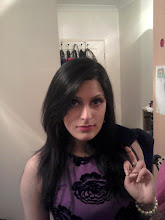Anita937
Tuesday, 22 January 2013
Tuesday, 8 January 2013
Thursday, 31 May 2012
Character Compositing!
For this project, we had to composite a moving character
into a scene and show certain aspects. I
had to show that the character could reflect on a surface, that a shadow would
move along with it, that the lighting within the scene was correct as well as
the colour and that the character would be completely masked out by one of the
objects in the flat photograph. We also had to make our character in a chrome
material so that it reflected the environment.
The photograph we took had to have two surfaces. The size of my photograph and therefore the
whole animation was 4288 x 2848.
At first, I took a photograph of trees in my garden for the
baby to walk behind but then realised I had no surface for him to reflect on
therefore I chose to do a picnic in the garden for my still image as I didn't
own any toys for the baby to walk through in a scene. The masked object would be the basket where
the baby walks behind. The reflective surface
was the glass of Ribena and the shadow was applied to the blanket on the floor
and the side.
I applied the image in the background and then initially
thought that the image had to be in the background of the renders which at
first confused me and over complicated everything. I then did it so that the background image
was not rendering in the background but could be applied in post
production.
I created objects in my scene that needed to have effects on
them such as the glass, banana, kiwi and basket. They were all basic shapes that could be
applied. I then used the matte/ shadow
reflection material to these objects but as I didn't want reflections on
everything, I made two versions of this material and switched off reflections
on one of them. I also created the basic
chrome material from Arch & Design and then applied this to the baby.
After, I went to the Environments options and mapped out a
environment/ background switcher. This
was applied onto a separate material slot and onto the camera mapped background
slot in the matte/ shadow/ reflection material.
This meant that these would not show in renders but mean that it would
register that these objects are still there.
This also means that the environment would be shown as a reflection on
the chrome baby.
I had to then add lights.
I used photometric lights which meant that it would be more useful for
the environment settings. I at first
thought I had trouble using these but it was the fact that I switched on the
matte/ shadow/ reflection material as the shadows were not showing anywhere or
even in the alpha view. I quickly sorted
this out by switching it off. For the
lighting, I used my camera settings for the lighting which was:
- Shutter Speed 1/
400
- Aperture f/8
- ISO 700.
I also adjusted the settings of the highlights and midtones
as these made the image far too bright therefore I decreased them till it
looked right. At first I was going to
use unitless 80000 to show the effect of sunlight but this option made the
render not show at all. However the Physical Unit option allowed it all to
show.
Next, I sorted my character out by creating a walk cycle and
adjusting his position so that he started off screen. His reflection on the glass was still visible
at this point so I knew it was working.
I gave him a standard straight walk cycle but decreased the actions as
they were over-exaggerated. This made
the walk cycle more realistic. I also
had to decrease the sort out the end time and the maximum step time so that the
baby would finish walking past the basket in the time frame.
Once the five second sequence was rendered, I imported them
into Adobe After Effects. I had to
render the sequence as pngs as these was the only file format that would allow
the baby to save the alpha and not have a black background even when adjusting
the settings. I also added some Z-Depth
to this sequence to practice it and to show that the still camera would need to
focus. These were exported as exr files
and imported as straight - unmatted. Once
completed, I decided to downsize the render as the original size would not fit
the monitor. I reduced the size by two
thirds as this seemed like a suitable size and almost half HD.
This project has enabled me to get a better understanding of
the film and game industry as by doing things this way, it can save a lot of
time and rendering if you use real life still images or video sequences (which
goes onto a more complex area) instead of creating everything from scratch in
3D.
Subscribe to:
Comments (Atom)





